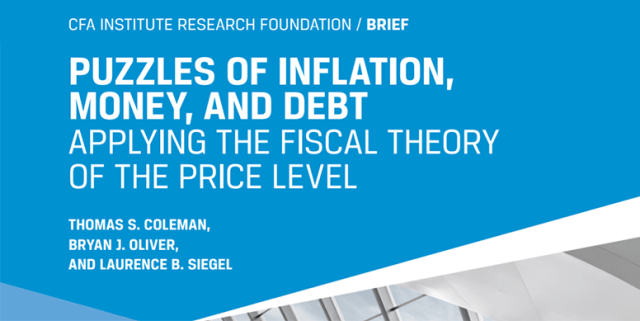“It is never a good idea to invest in a SPAC just because someone famous sponsors or invests in it or says it is a good investment.“
While special-purpose acquisition companies (SPACs) have been around for decades, they have attracted unprecedented interest and investment since the first wave of the COVID-19 pandemic. Amid this recent boom, the entrepreneur Richard Branson, retired baseball star Alex Rodriguez, and other celebrities have all sponsored their own SPACs.
But all this hype has come with considerable controversy as well as added regulatory scrutiny. And for good reason. SPAC-related excesses have been well documented and have raised questions about the underlying suitability of these investment vehicles. The SEC’s admonition, quoted above, indicates the credulity with which some approached the recent SPAC bubble.
So, what is a SPAC? How does it work? Who are the players? What are the risks and opportunities? And is the recent SPAC surge a one-time flash in the pan or something more enduring?

What’s a SPAC?
A SPAC, or “blank check company,” is a publicly traded corporation created to facilitate a merger, acquisition, or “combination” to take a privately held business public. The SPAC has a built-in time limit, usually of two years, in which to consummate a transaction involving at least 80% of the initial investment otherwise the capital is returned to investors.
SPACs raise money much like other publicly traded companies and initial public offerings (IPOs), through public-equity investment, among other sources and mechanisms, including private investment in public equity (PIPEs).
To bring a SPAC to market, the management team creates the blank check company to register with the SEC, publicly list on a national securities exchange, and raise capital. That capital is then held in trust while the management team identifies potential private companies to acquire. When that identification phase is complete and the target selected, the SPAC will deploy its capital to acquire or merge with that firm, thereby taking the target public in what is commonly referred to as a “de-SPAC” transaction.
Though SPACs have long been overshadowed by IPOs, SPAC investments have soared over the last several years, from $13 billion in 2019 to $96 billion in the first quarter of 2021 alone. The year 2021 saw a grand total of 679 SPAC IPOs globally worth a combined $172.2 billion. At one point, in fact, there were more SPAC offerings than IPOs.
Why SPACs?
Despite their mythos and grandeur, IPOs present significant barriers to entry. They require considerable time and cost to complete and their after-market challenges and regulatory burdens can render them impractical. Successive waves of the pandemic, with their supply chain disruptions and associated market volatility, have further exacerbated the pitfalls of the IPO market.
Meanwhile, as central banks have pumped capital into the economy and cut interest rates to stave off a pandemic-induced global recession, investors have been desperately searching for yield and some have looked to SPACs as a quicker and less arduous alternative to the IPO.

The Good . . .
Compared to traditional IPOs, SPACs have much shorter turnaround times and tend to be less expensive to facilitate. This ostensibly gives SPAC investors and managers more agility to strike while the iron is hot. Opportunities and their profits can be realized over a much shorter time horizon — six months or so — compared to traditional IPOs, which can take years to bring to market.
SPACs likewise provide quicker access to public funding and a faster exit for those who want to cash out, all while avoiding the traditional IPO dog-and-pony show. The SPAC process also can reduce price volatility, since a binding valuation is agreed upon and approved among the stakeholders before the merger takes place, in contrast to a traditional IPO where the underwriters tend to guide the valuation process.
SPACs have proven especially lucrative for the owners of the private companies that are taken public as well as the SPAC sponsors. SPAC investors, however, haven’t always fared as well.
The Bad and the Ugly
Multiple studies of SPAC performance over the past few years indicate that SPAC sponsors and the founders of the acquired company accrue the most benefits. The investors who bankroll the projects tend to receive far less than they put in. Despite their supposed simplicity, SPAC investing is more complicated than putting in money and getting back more.
The deflating SPAC bubble and its associated scandals have created a more cautious environment among investors and led to increased oversight from investors groups and regulatory bodies. The SEC has stepped in to clarify how SPACs work, and disappointing SPAC filings have spurred investigations and class-action lawsuits.
All of which means investors need to exercise their due diligence and approach SPACs with caution.

Other Challenges to Keep in Mind
- SPACs Don’t Explode: IPOs can vaporize a company’s liquidity along with interest from institutional investors and the general public. On the other hand, IPOs can also send the share price skyrocketing. SPACs cannot be upsized in the same way. Since the price is negotiated beforehand, they have a lower ceiling, but also, theoretically, a higher floor.
- Things Fall Apart: As acquisitions, SPACs are prone to short-circuit. Anything from legal liabilities and taxes to human resources issues can scuttle a deal after months of negotiation. Uncertainty is a given.
- “Public” Scrutiny: A company’s transition from private to public investment brings new disclosure requirements and new processes that could undermine the nature of the business. The cultural and regulatory environment a SPAC-acquired entity operates in can change overnight as it goes public as well. This increases the risk of employee turnover at all levels.
- Misaligned Goals: SPAC management teams may lack expertise in their target company’s market segment. This can lead to conflict between the SPAC sponsors and the owners of the company they are acquiring.
- Separating the Good from the Bad: The market is more discerning about SPAC quality today than earlier in the boom. So SPAC sponsors will have to demonstrate the quality of their business to potential investors.
- Fees: Many advisers punch their tickets in the SPAC food chain, from the SPAC promoters to the SPAC underwriters to the de-SPAC advisers, and so on.
- After-Market Trading: Nothing drives the market for new de-SPAC transactions like after-market trading in completed transactions. And as we kick off 2022, the after-market trading performance of SPACs is in steep negative territory, and this in the midst of paltry after-market trading performance in traditional IPOs.
- Clogged PIPEs: SPACs typically acquire companies valued at many multiples of their cash in trust. This requires the successful execution of a concurrent PIPE. But the PIPE market is clogged and there’s no plumber in sight. As a result, many SPACs are set to expire since a de-SPAC transaction can’t be carried off without a PIPE.

Moving Beyond the Hype?
Since the boom and bust of the recent SPAC hype cycle looks to have run its course, now may be a good time for investors to reevaluate these investment vehicles. Their shine has dulled considerably and that may enable a better and more accurate appraisal of their potential value, especially amid resurgent inflation, a stock market correction, and with higher interest rates on the horizon.
For their part, SPAC sponsors have to sharpen their game. They need to identify more realistic goals and set out more reasonable expectations.
Excesses aside, with their adroit structure and faster turnaround, SPACs should have an appeal to investors as well as company founders and sponsors.
They may be worth another look. A long, careful look.
If you liked this post, don’t forget to subscribe to the Enterprising Investor.
All posts are the opinion of the author. As such, they should not be construed as investment advice, nor do the opinions expressed necessarily reflect the views of CFA Institute or the author’s employer.
Image credit: ©Getty Images / SimoneN
Professional Learning for CFA Institute Members
CFA Institute members are empowered to self-determine and self-report professional learning (PL) credits earned, including content on Enterprising Investor. Members can record credits easily using their online PL tracker.,








